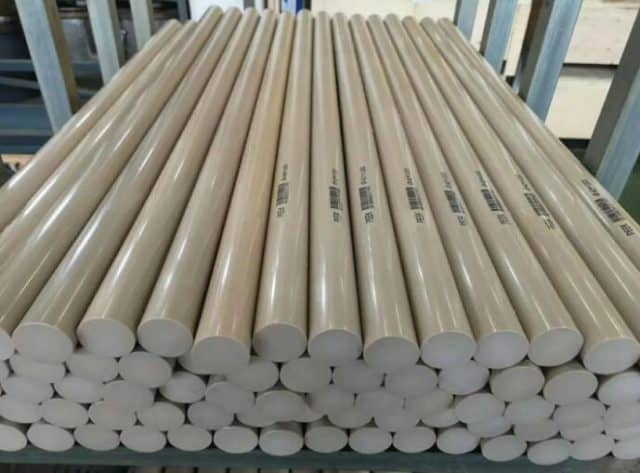Built for the Deep: How PEEK Polymers are Changing the Subsea Landscape
The marine environment is one of the harshest and most demanding engineering frontiers. From crushing water pressures and temperature shifts to constant exposure to salt water, subsea infrastructure must endure such conditions without jeopardizing performance and safety. Because of that, engineers and designers in the offshore and deepwater industries must choose the right materials for critical systems.
Among the myriad high-performance options available, PEEK (polyether ether ketone) polymers are excellent for diverse subsea applications. Let’s dive deeper into the environmental challenges unique to subsea operations and how PEEK helps overcome them. This article also discusses what to consider when choosing the appropriate PEEK thermoplastic for critical systems.
Understanding the Need for Specialized Materials
Designing for subsea conditions means accounting for intense stressors that most materials cannot handle, especially for long periods. The common obstacles include:
1. High Water Pressure—Subsea components must endure crushing hydrostatic pressures without deforming or breaking apart, especially in deepwater environments.
2. Corrosive Exposure—Salt water, chemicals, lubricants, hydraulic fluids, and certain gases can rust, pit, and degrade conventional metals and plastics over time, diminishing the components’ strength and performance.
3. Temperature Extremes and Fluctuations—Ambient temperatures in marine settings can reach extreme degrees and change rapidly. They’re particularly volatile in deep waters and around thermal vents.
4. Mechanical Wear—Constant motion can erode rotating parts’ surfaces and shorten their lifespan. In addition, flow-induced friction and abrasive particles can accelerate their deterioration.
5. Electrical and Safety Risks—Moisture and pressure can impair insulation for electrical components. They increase the risk of signal loss or failure, damaged cables, and explosions or fires, especially in bases handling flammable materials.
6. Accessibility Constraints— The harsh environmental conditions make maintaining, fixing, or replacing subsea components and systems expensive and difficult. These tasks can be even more challenging and time-consuming in hard-to-access subsea locations.
How PEEK Solves Subsea Engineering Problems
Traditional materials such as stainless steel or basic thermoplastics often fail to deliver the long-term performance required in subsea operations. On the other hand, PEEK excels in this field. This advanced and sought-after thermoplastic polymer offers properties that translate to practical benefits for subsea engineering.
Pressure and Temperature Endurance
PEEK exhibits incredible dimensional stability and mechanical strength even under constant hydrostatic pressures. It can also handle intense and volatile temperatures, contributing to its resistance to creep, deformation, and thermal degradation. These properties decrease the likelihood of cracking or failure and support consistent performance for a long time.
Durability Through Corrosion and Wear Resistance
Unlike standard metals and plastics, PEEK can withstand abrasions and caustic reactions from exposure and direct contact with salt water, aggressive substances, and gas mixtures. Because of its resistance, the polymer can maintain its structure and functionality, preventing leaks, breakdowns, and safety risks.
At the same time, PEEK has exceptional mechanical wear resistance and a low-friction surface, making it a choice material for moving parts like bushings, seals, and valve seats. These properties reduce material fatigue and risks of premature failure, extending component longevity while minimizing the need for costly maintenance.
Weight Reduction
With a much lower density than metals, PEEK helps lessen the overall weight of parts and assemblies without diminishing their robustness. This strength-to-weight ratio is critical for buoyancy-sensitive equipment and modular systems.
PEEK’s lightness gives engineers more freedom to design subsea architecture to enhance operational efficiency and simplify installation. Moreover, it makes transporting and deploying components much easier, cutting costs and time spent.
Electrical Insulation
With its high dielectric properties, PEEK effectively resists electrical conductivity even in wet, high-pressure settings. It also prevents shorts, signal interference, and fire safety risks. These capabilities make PEEK ideal for connector insulation, cable sheathing, and housings for sensors, control units, and monitoring equipment.
Selecting PEEK for Subsea Use
PEEK certainly offers exceptional performance. However, it will depend on the chosen polymer’s formulation, manufacturing process, and other factors. To ensure you pick the right type for your project, keep the following in mind:
Purity of PEEK
These polymers are available in numerous grades to meet diverse industry applications. Virgin PEEK types are perfect for operations requiring high purity or flexibility. Conversely, reinforced PEEK is excellent for fields seeking materials with enhanced properties. They contain fillers like glass or carbon fibers, but the additives vary depending on the application’s performance requirements.
Manufacturing Method
Procedures like injection molding, extrusion, and precision machining directly impact the polymer’s properties, tolerances, and overall cost. The application and volume requirements often dictate the best way to produce PEEK.
Material Compatibility
Engineers must consider how PEEK interacts with metals, elastomers, and adhesives in multi-material assemblies and infrastructure. Galvanic compatibility and sealing effectiveness are critical in mixed-material designs.
Compliance With Industry Standards
Subsea operations must abide by strict safety standards established by the ISO, API, or other regulatory bodies. Engineers must ensure that PEEK parts for offshore use meet quality and testing requirements specific to the marine, oil, and gas sectors.
Cost and Lifecycle Value
Because of its high-performance properties, PEEK may have higher upfront costs. However, this polymer extends component service life and lessens the need for frequent replacements, translating to significant long-term savings.
Bring Reliability to the Depths
Material failure is not an option in subsea engineering, and PEEK polymers can rise to the challenges unique to this landscape. Its ability to handle some of the harshest conditions on the planet makes it a material worth considering for high-stakes deepwater projects. Still, considering the compatible grade, production process, industry compliance, and cost value is key to enjoying its full benefits.
If you seek advanced materials for subsea applications, consider investing in PEEK. Connect with local manufacturers and suppliers to help determine the right material for your project’s demands.




